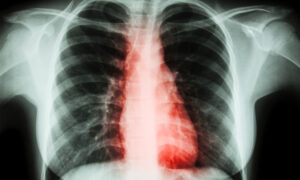
In a groundbreaking study, researchers from the University of Pennsylvania have unveiled new insights into how the length of telomeres—protective caps on chromosomes—during early embryonic development may influence cancer and aging. The study, published in Current Biology, reveals that telomere length is inherited in a complex manner that could have significant implications for understanding disease pathways.
Telomeres, often compared to the plastic tips on shoelaces known as aglets, prevent chromosomes from fraying or sticking to each other. However, like aglets, telomeres degrade over time. Each time a cell divides, telomeres shorten, and once they reach a critically short length, the cell enters a state called cellular senescence. This process is linked to chronic inflammation and age-related diseases.
Understanding Telomere Inheritance
The research team, led by Mia Levine and Michael Lampson, sought to understand how telomere length is inherited. Their experiments in animal models suggested a parent-of-origin effect. When embryos received long telomeres from fathers and short ones from mothers, they experienced rapid telomere elongation. The reverse pairing resulted in telomere shortening.
“This parent-of-origin effect is consistent with patterns we’ve seen in human studies,” said Levine. “For example, children of older fathers tend to have longer telomeres than those of younger fathers. However, human studies are often confounded by factors like diet and lifestyle, which is why we turned to a controlled animal model.”
The Role of Alternative Lengthening of Telomeres (ALT)
The study highlights a pathway known as alternative lengthening of telomeres (ALT), which is linked to tumor biology and cancer. Unlike the enzyme telomerase, which adds DNA-protein complexes to chromosomal tips, ALT “copies and pastes” telomeric DNA from one chromosome to another. This process is used by approximately 10–15% of cancers.
“When people study ALT in cancer cells, it’s already been happening for many generations,” Levine explains. “But in embryos, we can catch ALT at its very initiation, at the very first cell divisions.”
Implications for Human Health and Disease
The findings have significant implications for understanding cancer and aging in humans. The researchers are now using long-read genome sequencing to investigate whether the parent-of-origin effects observed in mice are detectable in humans. This could provide new insights into how telomere dynamics influence human health.
Moreover, the study opens new avenues for cancer research. By studying the initiation of the ALT pathway in embryos, scientists can gain a better understanding of how this process is naturally activated, offering potential targets for therapeutic intervention.
Future Directions and Research Support
Looking ahead, Levine and her team are keen to explore how these findings might translate to human health. They are particularly interested in the implications for cancer research, as understanding the initiation of the ALT pathway could lead to new treatments.
The study was supported by the National Institutes of Health, the Penn Center for Genome Integrity, the University Research Fund at the University of Pennsylvania, and the National Research Foundation of Korea. Hyuk-Joon Jeon, a former postdoctoral researcher in the Levine and Lampson Labs, was the first author of the study.
As research continues, the scientific community eagerly anticipates further discoveries that could reshape our understanding of aging and cancer, potentially leading to breakthroughs in prevention and treatment strategies.





